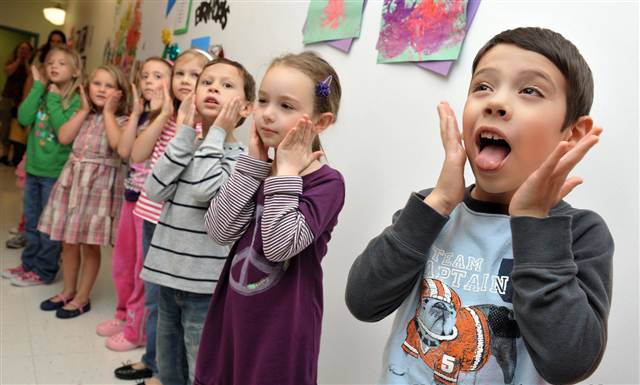In part one, I highlighted the importance of setting the tone for fun, maintaining a quick-paced session, and delivering fitness goals in the context of games. In part two, I will talk about the importance of children taking ownership of the session and feeling like they are responsible for their own success.
If a child has a sense of ownership or investment in something, he or she will naturally want to take care of it and nurture it. It is important to create that experience in each training session. One way to do this is to give them some choice in what they will do by having two or three options for each goal you want to accomplish. You might ask if they want to play the Indian club bowling game or sandbag target toss to work on kinesthetic differentiation (accuracy in controlling their power). After they have been training for a while, they will come in requesting certain games every time; it is, of course, important to balance what they need with what they want.
Peer coaching is another way to get them involved and improve critical thinking and leadership qualities. Have children watch each other and critique what they could have done better and where they were successful. Pair a new child with a “coach” and have them model and explain why and how to do things. Studies have shown that children can learn as much, if not more, from peer modeling, than solely from a coach or teacher (Magill, 2010). Doing this can show that someone just like them can actually do it, which can help them feel more empowered.
Another great way to foster a sense of ownership is to have children lead various games, such as follow the leader through an obstacle course or Simon Says. You can also encourage them to make up exercises, which are usually hybrids of different exercises you have already taught them. Let them make up the name for the exercise and use it the next time you meet. There is nothing like hearing your trainer/coach lead the group in an exercise you invented!
A key ingredient to keeping kids engaged and involved in the session is making sure that they take ownership. A great way to achieve this is through giving them choices and techniques such as peer coaching. They not only get more invested in the sessions but they also sharpen their athletic skills through deeper analysis as well as learn valuable lessons in leadership. In part three, I will discuss the importance of enriching their experiences by giving them goals that they can accomplish and teaching the purpose behind what they are doing.
References: Magill, R. A. Ph.D. (2010). Foundations of Exercise: Motor Learning and Control: Concepts and Applications. New York City, NY: McGraw-Hill Companies, Inc.
Craig Valency, MA, CSCS, president and co-founder of SPIDERfit, has been a personal trainer for the last 11 years. He is currently working at Fitness Quest 10 in San Diego, an elite personal training and athletic conditioning facility. He specializes in youth strength and conditioning programs that promote physical literacy, injury prevention and optimal performance. Along with training youths from 6 to 18 years of age for general fitness, Craig has also worked with some of the top junior tennis players in the world. He has been a physical education consultant for the Stevens Point school district in Wisconsin for the last 3 years, helping revamp the district wide programming for the K-12 PE curriculum. Craig earned his bachelor degree from UCLA, and Masters Degree in Kinesiology from San Diego State University.





Connect with SPIDERfit!